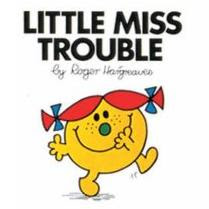i'm very passionate about disability awareness - not only because i'm a health professional but also because i myself am a person with a congenital disability. i had a number of surgeries at Sick Kids Hospital in Toronto that allowed me to walk, run, and jump with my little classmates. but despite their incredible work, i now face a number of physical limitations that are growing every day.
while completing my master's degree, i was involved in research about occupational therapy students with disabilities - both as a participant and as a researcher. i focused many of my projects on disability awareness and one prominent yet simple theme continually arose:
people-first language.
it's very difficult to keep up with the most current politically correct terms. sometimes these terms do seem clunky and ridiculous. it's usually a good idea to use the term that the person with the disability is using; that's what they're comfortable with and are accepting of. but a general rule of thumb is people-first language which puts the person before the disability. for example: person with a disability instead of disabled person; child with a hearing impairment instead of deaf child. this simple switch of terminology shows that they are a person first and that their disability - while still a part of them - is secondary and does not define them.
this concept has yet to catch on in general society. rarely does the media use people-first language although their terminology is often appropriate and polite. so how great it was to see the people-first strategy being used in a major pop culture reality show. i was watching an episode of So You Think You Can Dance Canada and watched a young man, Jonathan Arsenault of Kitchener, give a wonderful performance, emotional and organic. after going through 3 of the 4 judges, they came to the last judge who brought up the fact that Mr. Arsenault has a condition in his brain that causes migraines and seizures; moreover, the surgery to correct this problem may deteriorate his motor skills. naturally, because of his desire to dance, he is foregoing this surgery for as long as possible.
the key to the example i just outlined is that they let him perform first so you could see him as a dancer and judge him as such. THEN they told you about his medical situation. i've seen episodes of So You Think You Can Dance (the original American version) where they tell you about a person's condition before you see their audition. well, then you already have preconceived notions about this person! you are not judging them solely on their skills because perhaps even unconsciously, you're factoring in their disability. as i stated in one of my campaigns, i have a disability but i am not disabled, and i believe it is the same for these dancers.
i'm so glad that this season of the Canadian show has made this change. it's a small change for the disability awareness movement but it could have big results.
Friday, August 21, 2009
Subscribe to:
Posts (Atom)
